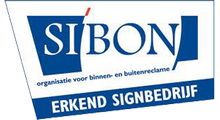Tender Agreement Format
When it comes to tendering for contracts, having a clear and concise agreement format is essential to ensure a smooth and successful bidding process. A tender agreement format is a legal document that outlines the terms and conditions of a proposed contract and sets out the expectations of both the bidder and the contracting authority.
As a professional, I have reviewed and edited many tender agreement formats over the years. Here are the key elements that I recommend including in your tender agreement format:
1. Scope of Work: This section should outline the details of the project or services being tendered, including the scope, objectives, deliverables, timelines, and any other relevant details.
2. Bid Submission Guidelines: This section should provide clear instructions on how to submit a bid, including the deadline for submission, the format and structure of the bid, and any required supporting documentation.
3. Evaluation Criteria: This section should outline the criteria that will be used to evaluate the bids, such as technical expertise, quality of work, price, and past performance.
4. Confidentiality and Intellectual Property: This section should address the sensitive nature of the project and outline the requirements for confidentiality and intellectual property protection.
5. Contract Terms and Conditions: This section should outline the terms and conditions of the contract, including payment terms, liability and indemnity clauses, and termination and cancellation provisions.
6. Dispute Resolution: This section should outline the procedures that will be used to resolve any disputes that may arise during the contract period.
7. Signatures: The end of the tender agreement format should include spaces for both the bidder and the contracting authority to sign and date the document, indicating their acceptance of the terms and conditions.
By including these seven key elements in your tender agreement format, you can ensure that your bidding process is transparent, fair, and legally sound. A well-designed tender agreement format can also help to attract high-quality bidders and increase the chances of a successful outcome for both parties involved.

